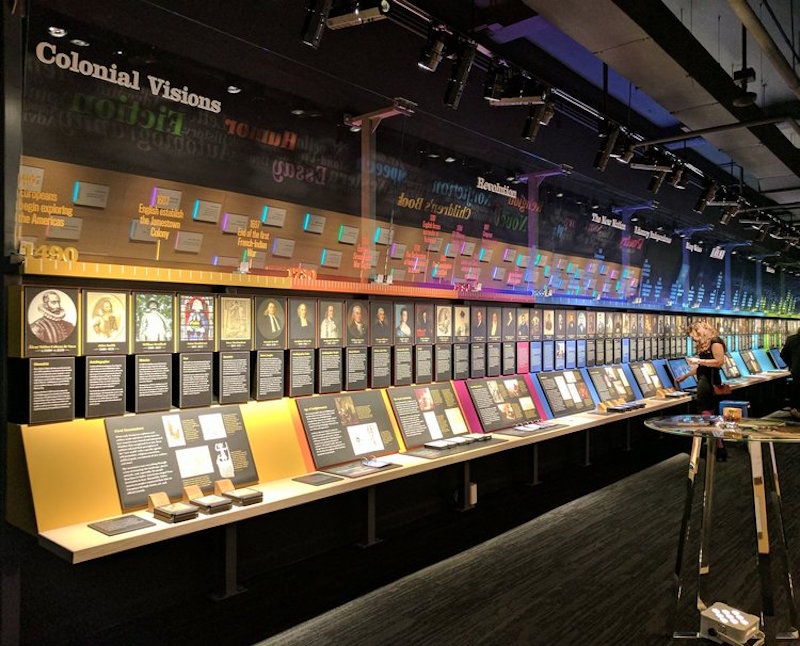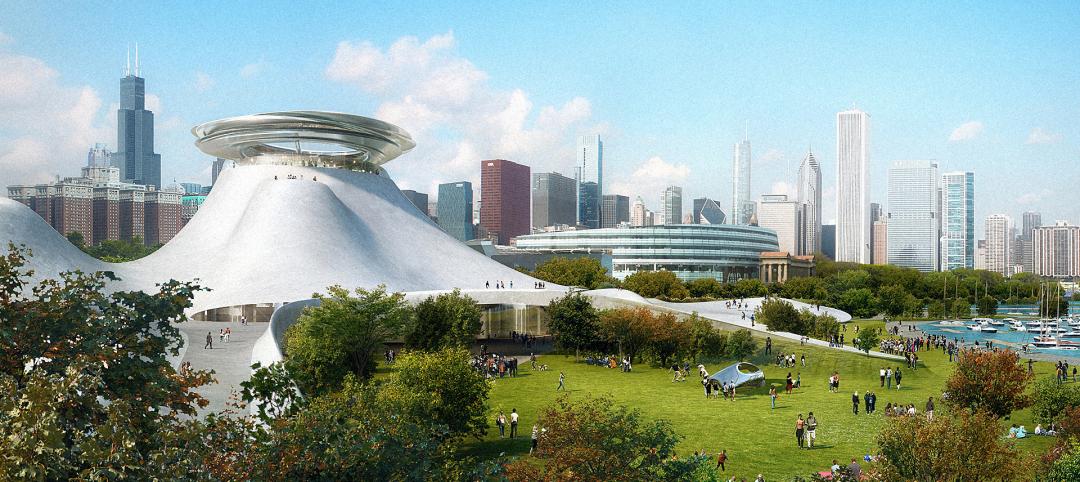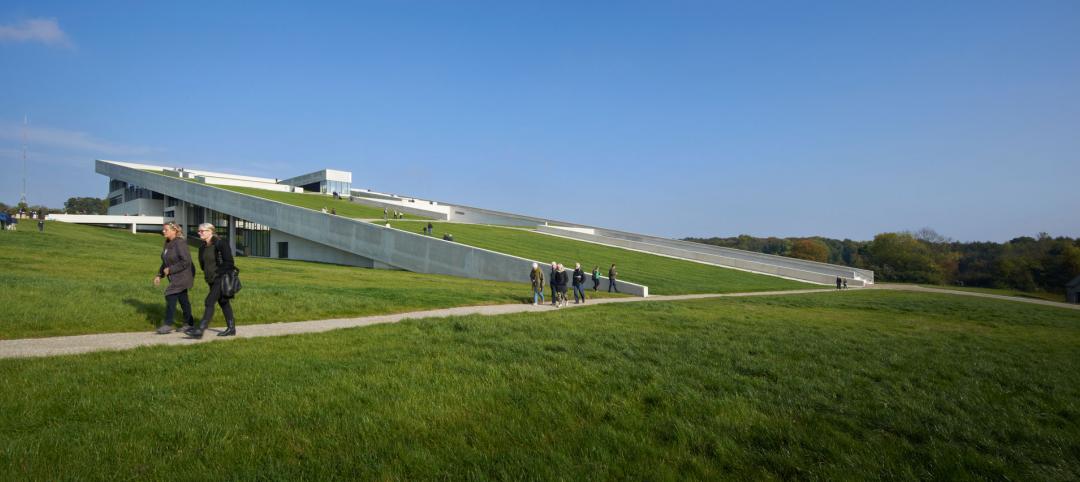Located in an ordinary building whose bottom floor is occupied by a bank at 180 N. Michigan Avenue is a museum the likes of which can’t be found anywhere else in the country. The American Writers Museum, a project seven years in the making, officially opened to the public on May 16.
According to project designer Amaze Design, the museum is “the first national museum in the United States dedicated to the celebration of American writers and the exploration of their influences on our history, our identity, our culture, and our daily lives.”
A small museum dedicated to American writers sitting one floor above a bank in a non-descript Chicago building may at first sound like the type of museum you stumble across while on a cross-country road trip: the New England Maple Museum, the National Mustard Museum, or the broadly (and most definitely aptly) titled Museum of the Weird. The American Writers Museum could very easily have taken on the appearance of a musty, forgotten corner of a local library; the acidic, vanilla-laced smell of old books heavy in the air.
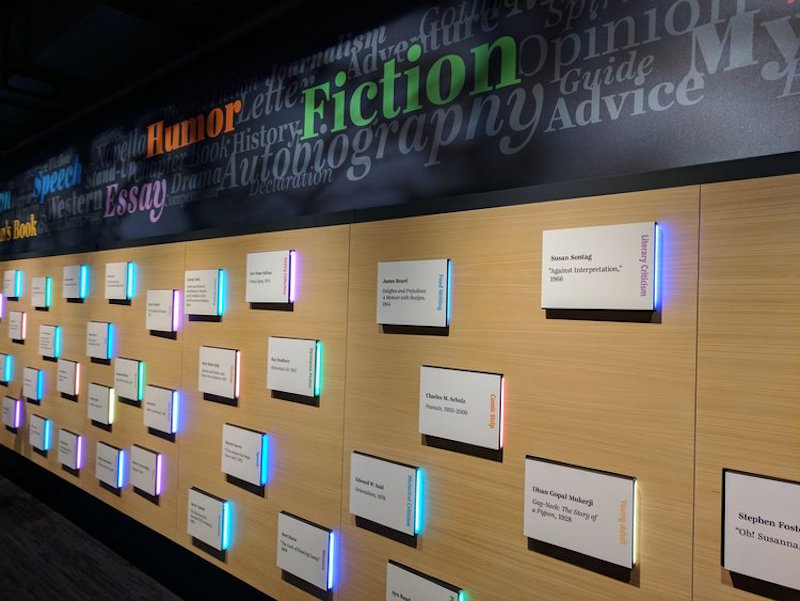 Photo courtesy of Amaze Design.
Photo courtesy of Amaze Design.
The museum didn’t go in that direction, however. Instead, perhaps ironically, the museum dedicated to the greatest Americans to ever lay ink on paper integrates a heavy dose of technology into the museum’s 10,000 sf.
Bright colors, colored lights, and large, interactive touchscreens highlight the space. “The museum covers the breadth and range of American writers through unexpected, in-depth, immersive, and hands-on exhibits,” according to the architect.
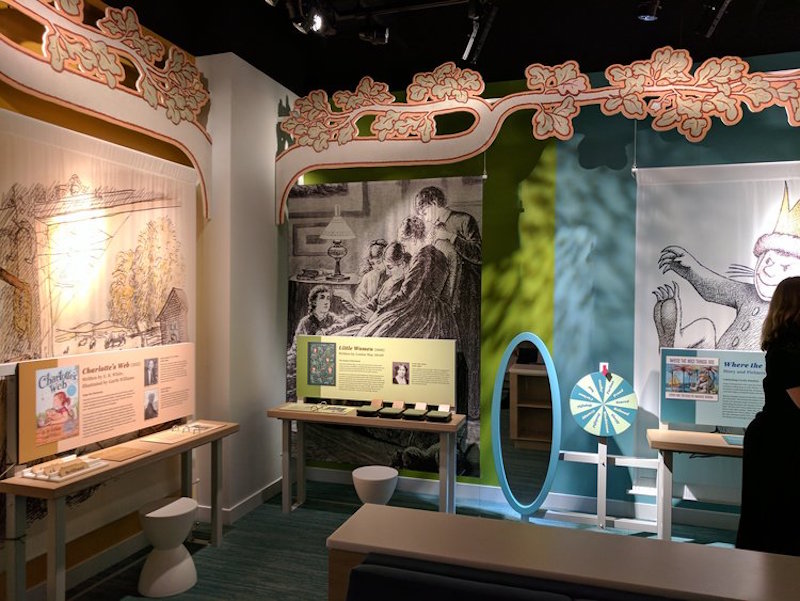 Photo courtesy of Amaze Design.
Photo courtesy of Amaze Design.
Included in the museum are permanent exhibitions highlighting Chicago writers, a children’s literature gallery, and a “Word Waterfall.” Current temporary exhibits include Jack Kerouac’s original manuscript scroll for On the Road and Palm, an exhibit inspired by the life and work of the American poet W.S. Merwin.
Amaze Design was responsible for all design, research, media production, and fabrication and installation, which were accomplished through collaborative partnerships.
The project had a budget of $10 million.
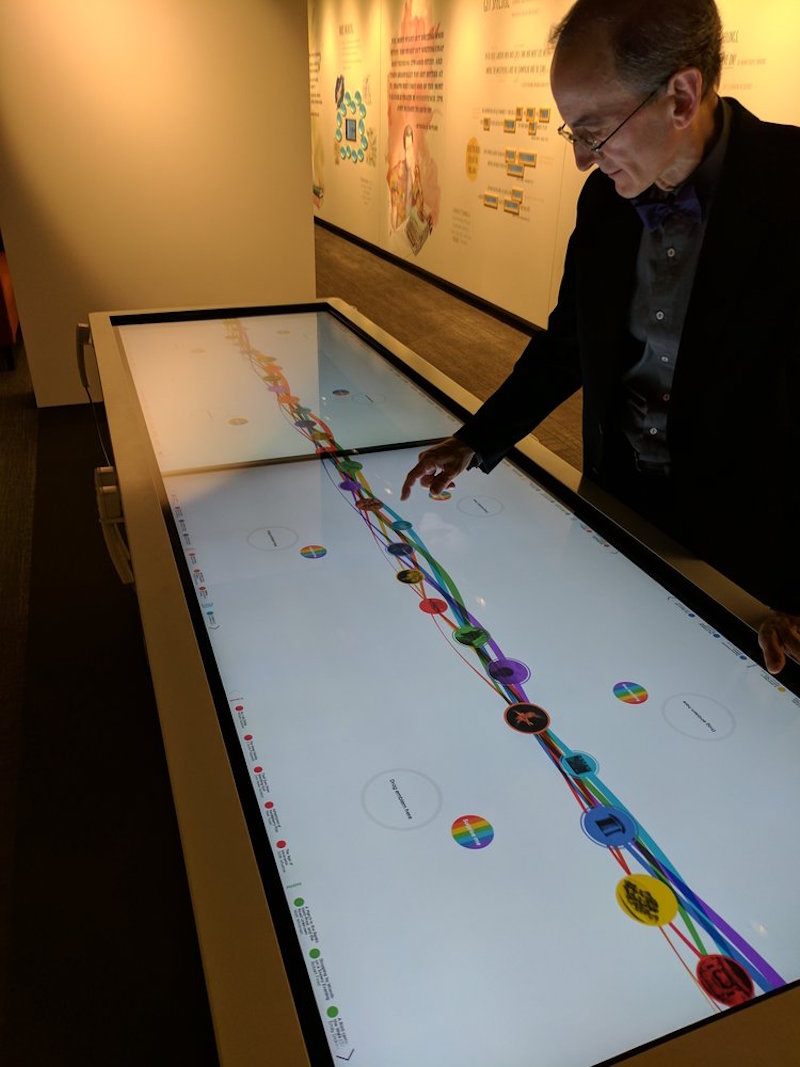 Photo courtesy of Amaze Design.
Photo courtesy of Amaze Design.
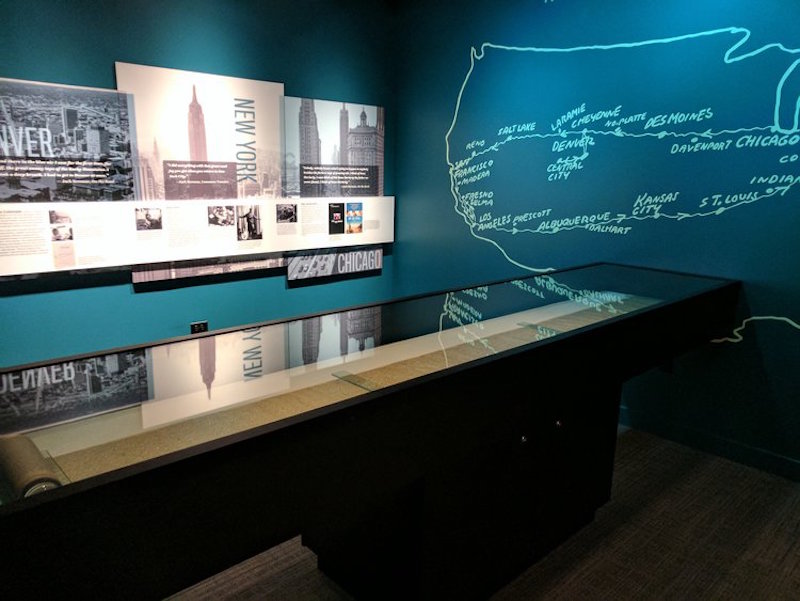 Photo courtesy of Amaze Design.
Photo courtesy of Amaze Design.
Related Stories
| Nov 14, 2014
Bjarke Ingels unveils master plan for Smithsonian's south mall campus
The centerpiece of the proposed plan is the revitalization of the iconic Smithsonian castle.
| Nov 12, 2014
Chesapeake Bay Foundation completes uber-green Brock Environmental Center, targets Living Building certification
More than a decade after opening its groundbreaking Philip Merrill Environmental Center, the group is back at it with a structure designed to be net-zero water, net-zero energy, and net-zero waste.
| Nov 7, 2014
NORD Architects releases renderings for Marine Education Center in Sweden
The education center will be set in a landscape that includes small ponds and plantings intended to mimic an assortment of marine ecologies and create “an engaging learning landscape” for visitors to experience nature hands-on.
| Nov 5, 2014
The architects behind George Lucas' planned Chicago museum unveil 'futuristic pyramid'
Preliminary designs for the $300 million George Lucas Museum of Narrative Art have been unveiled, and it looks like a futuristic, curvy pyramid.
| Nov 3, 2014
IIT names winners of inaugural Mies Crown Hall Americas Prize
Herzog & de Meuron's iconic 1111 Lincoln Road parking garage in Miami Beach, Fla., is one of two winners of the $50,000 architectural prize.
| Oct 29, 2014
Diller Scofidio + Renfro selected to design Olympic Museum in Colorado Springs
The museum is slated for an early 2018 completion, and will include a hall of fame, theater, retail space, and a 20,000-sf hall that will showcase the history of the Olympics and Paralympics.
| Oct 23, 2014
Prehistory museum's slanted roof mimics archaeological excavation [slideshow]
Mimicking the unearthing of archaeological sites, Henning Larsen Architects' recently opened Moesgaard Museum in Denmark has a planted roof that slopes upward out of the landscape.
| Oct 16, 2014
Perkins+Will white paper examines alternatives to flame retardant building materials
The white paper includes a list of 193 flame retardants, including 29 discovered in building and household products, 50 found in the indoor environment, and 33 in human blood, milk, and tissues.
| Oct 15, 2014
Harvard launches ‘design-centric’ center for green buildings and cities
The impetus behind Harvard's Center for Green Buildings and Cities is what the design school’s dean, Mohsen Mostafavi, describes as a “rapidly urbanizing global economy,” in which cities are building new structures “on a massive scale.”
| Oct 12, 2014
AIA 2030 commitment: Five years on, are we any closer to net-zero?
This year marks the fifth anniversary of the American Institute of Architects’ effort to have architecture firms voluntarily pledge net-zero energy design for all their buildings by 2030.


